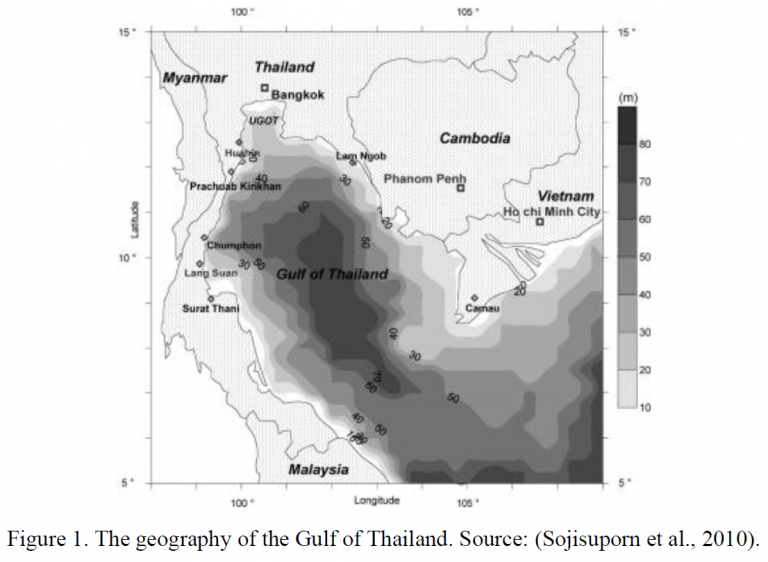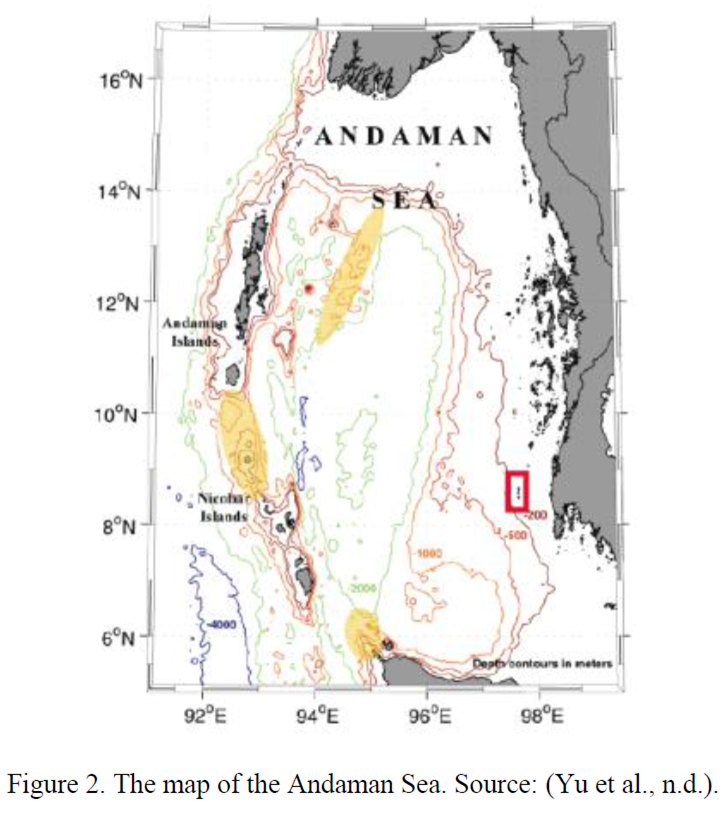Gulf of Thailand and Andaman Sea
In Thailand, a coastal upwelling was recorded to take place in the Gulf of Thailand (GoT) during the southwest monsoon (Buranapratheprat et al., 2008; Sojisuporn et al., 2010). Upwelling in this area was found to be induced by surface current divergence, which is triggered by the shape of the shoreline and wind direction (Buranapratheprat et al., 2008). Interestingly, the area of coastal upwelling in the GoT coincided well with the region of high larvae and grown-up fish that survived well in nutrient-rich waters (Sojisuporn et al., 2010). Another possible location of coastal upwelling in Thailand is in Andaman Sea, where it was evidenced through a shallow pycnocline, high salinity near sea surface and high chlorophyll-a (Buranapratheprat et al., 2010).


References
Buranapratheprat, A., Laongmanee, P., Sukramongkol, N., Prommas, R., Promjinda, S., & Yanagi, T. (2010). Upwelling induced by meso-scale cyclonic eddies in the Andaman Sea. Coastal Marine Science, 34(1), 68–73.
Buranapratheprat, A., Yanagi, T., Olaf Niemann, K., Matsumura, S., & Sojisuporn, P. (2008). Surface chlorophyll-a dynamics in the upper Gulf of Thailand revealed by a coupled hydrodynamic-ecosystem model. Journal of Oceanography, 64(5), 639–656.
Sojisuporn, P., Morimoto, A., & Yanagi, T. (2010). Seasonal variation of sea surface current in the Gulf of Thailand. Coastal Marine Science, 34(1), 91–102.
Yu, W., Khokiattiwong, S., Liu, Y., & Xue, L. (n.d.). Open ocean impacts on Thai costal ecosystem in Andaman Sea.
